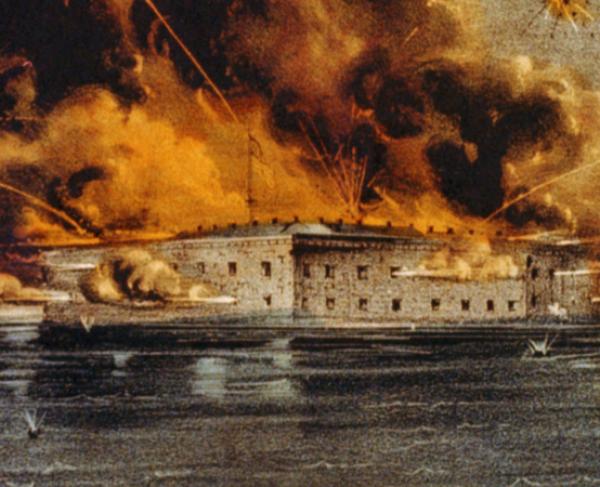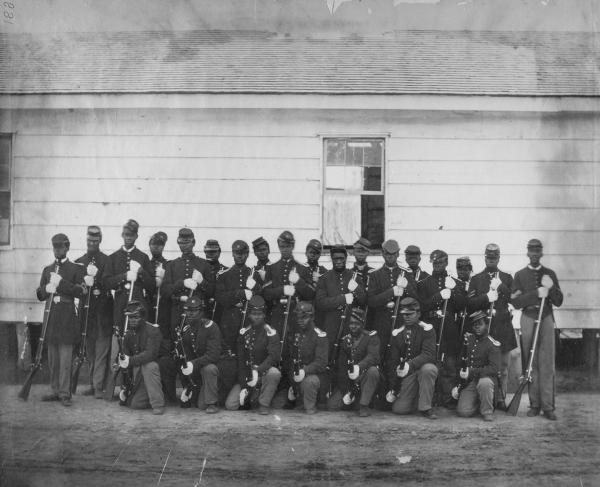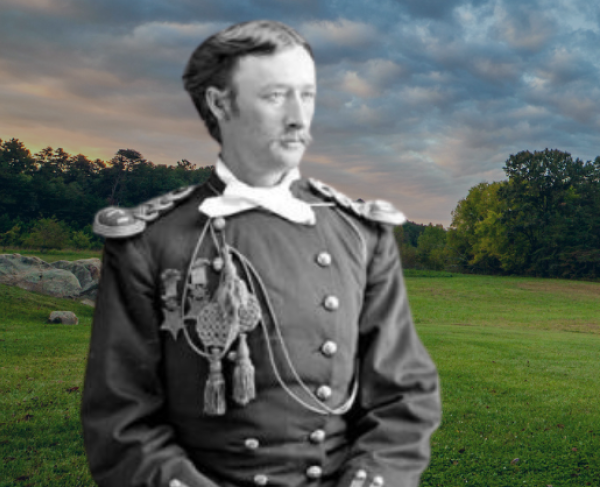Siege of Port Hudson

BY PHILLIP FALLER
In May 1863, Major General Nathaniel F. Banks turned his Union army away from its northwesterly advance on Shreveport, Louisiana, toward the Mississippi River. His new goal was the capture of Port Hudson. Banks felt confident that he would have an easy victory over Major General Franklin Gardner’s Confederate forces there. After bagging Gardner’s army, Banks believed, he could sweep north to the aid of Major General Ulysses S. Grant, and together they would capture Vicksburg.
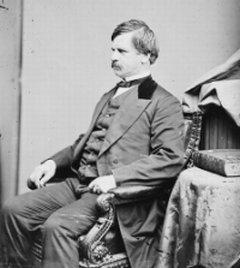
As Banks moved his main field army eastward, he sent orders to Baton Rouge and New Orleans to prepare all available troops for the field. This order included all the 20-pounder and 30-pounder Parrott rifle batteries and the rifled 12-pounder battery of the 1st Indiana Heavy Artillery. On May 19, A, B, G, H and K companies broke camp at Brashear City, La. They loaded their eight 30-pounder Parrott rifles and two 4.62-inch rifled bronze 12-pounders aboard a waiting New Orleans Great Western Railroad train. Without delay, the artillerists got underway for Algiers, La., across the Mississippi River.
The gunners arrived at Algiers within a few hours and quickly unloaded their equipment. Company A found four 20-pounder Parrott rifles waiting for them in Algiers. The Hoosiers made a spirited game of moving their guns and siege equipment through the streets to the riverfront dock. River steamers were waiting to transport men, guns, equipment, 100 mules and 50 wagons to Baton Rouge. In a short time the steamers were loaded and underway. Arriving at Baton Rouge, the force disembarked, hitched their mules to their limbers, caissons and wagons, and set off. Their trip took them northward along the route traveled two days before by Maj. Gen. Christopher C. Augur’s infantry division.
Augur’s forces had met with stiff opposition at the village of Plains Store, a few miles away from Port Hudson. On May 21, a fierce engagement of several hours took place. As often happened throughout the war, the outnumbered and outgunned Confederates gave a splendid account of themselves. They fought Augur’s army to a halt and held them off for more than six hours. Finally, in danger of having their flanks turned, and running low on ammunition, the Rebels withdrew to Port Hudson. They dragged off some of their cannons by hand rather than abandon them to the Yankees.
The heavy artillerists coming up the same road two days later noticed the number of dead artillery horses, the battle debris and the stench of death in the fields. They sensed that they soon would be in for a similarly hard fight. On May 23, Colonel John A. Keith’s command of five companies of the 1st Indiana Heavy Artillery arrived at Port Hudson and reported to General Augur.
That night, in preparation for a general assault against Port Hudson the next morning, Keith positioned all but one of his heavy batteries on Augur’s front. Keith detached Captain William Roy’s Battery A from his command, sending it farther left to support Brig. Gen. Thomas W. Sherman’s assaulting columns. Under cover of darkness, Keith had his heaviest guns rolled into position.
Shortly before dawn on May 27, one of Battery A’s 20-pounder Parrotts fired the signal round to begin the initial bombardment of Port Hudson. The two-gun section occupied a position on the south-central portion of the Union lines. Sherman, commanding that part of the lines, watched the effect of the shot; then, with his staff, he retired to the rear to wait.
At the signal, all the light batteries opened fire at Port Hudson. About half an hour later, as soon as the sun rose, the heavy guns opened on the fortifications. Thirty-eight guns on Augur’s front belched forth their iron missiles. Twenty-four pieces of light artillery joined the fray from Brig. Gens. Cuvier Grover’s and Godfrey Weitzel’s fronts on the Federal right. Twenty Federal cannons simultaneously spewed flames on Sherman’s front.
The Confederate gunners accepted the challenge, and the contest was on to see who could disable more guns. The Confederates had 16 guns on their left. These included two rifled 24-pounder siege guns, two 3.5-inch Blakely rifles and one 2-pounder breech-loading Hughes gun. The rest of the line mounted 6-pounder bronze guns and 12-pounder bronze howitzers. These pieces occupied nine battery emplacements. The Confederate center mounted 16 cannons, including two 24-pounder smoothbore siege guns, one 24-pounder rifled siege gun and a rifled 12-pounder bronze gun. Eight gun emplacements held the center’s guns. Five emplacements on the right of the defenses held 11 light guns, including one Confederate 3.3-inch rifle, two Confederate 10-pounder Parrotts and one 20-pounder Parrott.
As the contest heated up, the Hoosier gunners sent spotters to climb the nearest tall trees and report the effects of their shots. The sun climbed higher, and tempers rose with the temperature. The infantry assault against the left of the Confederate lines had started, but the assault on the lines in front of Augur and the Hoosier gunners had not begun. Nor had the assault upon the Rebel right.
Blue-clad and gray-clad sharpshooters blazed away, and soldiers on both sides had to keep their heads down. On Augur’s front, the Union light guns moved into exposed positions in an open field less than half a mile from the Confederate defenses. They had no shelter from the sharpshooters’ savage fire. The artillerists were constantly changing position to avoid enemy rifle and cannon fire. As if the enemy fire were not enough trouble, they also had to contend with whirring iron fragments from premature shell bursts and the concussion from a Federal 20-pounder Parrott battery.
The large siege guns could not be easily moved around, although they did have hastily built earthworks to shelter behind. With that limited protection, their crews prayed the earthworks would keep out most of the enemy’s iron. The more intense fire did not reach the rearmost line of guns, which were nearly out of range of the lighter Rebel guns. Captain Edward McLaflin’s Battery G was in a more exposed position. His tong-range rifled cannons were within a smoothbore gun’s shorter range, and they were also within range of sharpshooters. just after they started firing, Southern riflemen made it too hot for McLaflin’s men to work their guns.
A regular hail of bullets and cannon shot spattered the blue-jacketed Hoosiers’ works. Several shots hit the center 30-pounder Parrott, and balls from 24-pounder siege guns and 6-pounder light guns plowed into the battery. Many of the damaging rounds came from a 6-pounder battery on the right. A hissing slier splintered the right wheel of the center gun. Working under heavy fire, the gun’s crew managed to get a wheel from the limber. They rolled the wheel into the emplacement, jacked UP the Parrott rifle and changed the wheel. Then they heaved the gun back into action.
Another shot blasted a sponge rod out of one crewman’s hands as he swabbed out the gun. The sponge end remained in the muzzle. Sweating and swearing, the crew removed the sponge. Relief crewmen helped the injured man to the rear, and firing resumed. As the crews moved the heavy rifles into position, the maneuvering handspikes were shot from their bands; many in the battery received wounds from large splinters. The flying lead, iron and wood killed two men during the day’s fighting. In spite of this punishment, Battery G dismounted two heavy enemy guns.
While this was going on, Captain James Connelly’s Battery H, more than three-fourths of a mile to the rear of Battery 0, was maintaining a steady fire from its position behind an earthwork in the middle of a field. Due to the range, the Confederates’ light guns were not much of a threat to Connelly’s battery, but the heavier pieces were troublesome. The crews nevertheless succeeded in dodging the incoming rounds and served their 30-pounders well. As they labored they worked up a hearty thirst, which they slaked by consuming dippers of whiskey from buckets provided by the quartermaster. The relief details found time to read letters from home without being too bothered by the incoming rounds. In spite of the whiskey-or perhaps because of it-the battery’s crews silenced two guns and dismounted a third.
Captain James Grimsley’s Battery B also maintained a steady fire throughout the action. His three 30pounder Parrotts occupied a position well screened by trees, and the battery did not receive a heavy return fire. The trees, likewise, screened Grimsley’s targets and protected them in turn. Captain Clayton Cox’s Battery K was also in a wooded area, but his battery was three-fourths of a mile closer to the thundering Rebel guns. It came under a galling fire from its front and right flank, similar to the punishment being handed out to McLaflin’s battery.
By now it was early afternoon, and the assault on the northern lines had ended in disaster for the Federals. A tangle of cut trees and underbrush, as well as swamplands and deep ravines, stowed the assaulting troops’ advance. The natural barriers were quite formidable, especially since the Confederate rifle pits were atop bluffs overlooking the swamps and ravines. As the tired bluecoats piled up at the base of the bluffs, they were met with a withering blast of buck and ball from the shotguns of the 1st Alabama and the rifles of the 39th Mississippi and the 10th and 18th Arkansas. The Federal ranks broke and ran.
A fortified semidetached works at the northeast corner of the enemy lines earned the name ‘Fort Desperate.’ The 15th Arkansas held this outpost against several attacks during the day. Two 12-pounder howitzers from Captain Andrew Herod’s 1st Mississippi Battery B, mounted in the salient points of the works and charged with canister, helped in its defense. The Union soldiers held onto the ground they had won only because they faced certain death if they tried to retreat. Others managed to crawl off under cover of logs and stumps. Some sought safety in the lee edges of die same bullet- spattered ravines that had tangled their advance.
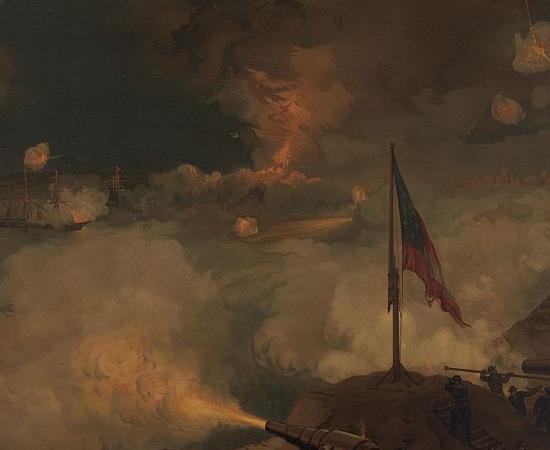
More than six hours tardy, at 2 p.m. Sherman finally led his men forward, This happened only after Banks threatened his recalcitrant subordinate with a replacement. Sherman personally led his men across a long, wide field. Sherman’s men moved out in good order across the field, battle flags flying. They were supported by two light batteries in the center and Battery As 20-pounders, separated into two sections. Their exploding shells forced Captain George Abbay to pull his Mississippi Battery’s guns from their embrasures to behind the thick dirt parapet for safety. There, Abbay doubled the canister in his guns and waited.
As the Union infantry neared the earthworks, a scythe of lead and iron mowed them down. Abbay ran his guns out of hiding and at point-blank range blasted gaping holes in the Yankee ranks. A ball dropped Sherman’s horse. Sherman recovered from the fall and rose, waving his sword to encourage his men. Another ball shattered one of Sherman’s legs, and he was carried from the field. As they advanced through the cannonade, the Federals also came under rifle and shotgun fire from the defenders. Sherman’s delayed attack had allowed the Confederates time to shift men from other parts of the defenses and concentrate a heavy fire upon the attackers. Southern cannons poured round after round of shell and canister into the advancing, and then faltering, blue ranks. The retreating troops ran off the field into gullies and ravines under cover of Battery As thundering Parrott rifles.
Augur, under orders to wait for Sherman’s attack before starting his own, sent his men into action shortly after 2 p.m. The heavy guns in the rear fell silent for fear of hitting their own attacking men. The closer light batteries were running low on ammunition, but they kept up a covering fire until they were passed by the advancing foot soldiers. Augur’s infantry moved rapidly across the first few hundred yards of level ground, then slowed as it crossed furrowed fields and came upon enemy abatis. A little farther on, a heavy fusillade of lead from the Confederate guns brought the Union line to a complete stop. Augur withdrew his men and artillery, and the distant guns of Indiana batteries B, H and E provided covering fire.
During the day, Battery K had expended 300 rounds from its two guns in an eight-hour period. Battery G had fired 450 rounds from its three 30-pounders, and Battery H had fired more than 250 rounds from its two 30pounder rifles. Battery E joined Batteries G and K in moving to the rear for a few days of well-earned rest. The men in Batteries B and H maintained their positions and kept up a desultory fire for the next 10 days.
The heavy and light guns had done their cruel jobs well. Only one man out of the entire 1st Alabama crew manning the 12-pounder gun at the Jackson Road redan escaped death or injury. A 24-pounder smoothbore siege gun near the railroad line through the defenses had its muzzle shattered by iron bolts. Federal fire had dismounted two other 24-pounder siege guns and several light guns, too. Flying iron smashed a 12-pounder howitzer and killed its commander, Lieutenant Jesse Edrington, in Fort Desperate. Atop Commissary Hill to the rear of Fort Desperate, Captain James Sparkman received a mortal wound while directing the fire of his 3.5 -inch Blakely rifles. Also wounded was Captain J.L. Bradford of Battery F, 1st Mississippi. In most cases, the dismounted pieces had repairs made and were back in service in one or two days.
Confederate iron had taken its toll, too. First Indiana’s Battery G lost two men killed, and Battery B had one man blinded by an exploding shell. The 1st Maine Battery had one man killed and several men wounded, as did Battery A, 1st U.S. Artillery, and Battery G, 5th U.S. Artillery. The other Federal batteries reported a few men wounded but no deaths. Many of the Union infantry casualties were due to the sweeping fire of canister from the Rebel guns.
After the failure of the May 27 assault on Port Hudson, what was to become the longest siege on U.S. soil commenced. The two opposing infantry forces settled into sharpshooting contests. Attacks were limited to probes by skirmishing parties along the line. A timed, heavy artillery fire began, its purpose to harass the enemy, destroy his facilities and prevent repair of damages.
General Banks sent to Baton Rouge and New Orleans for the rest of his siege guns. He ordered his pioneers (military engineers) to construct artillery emplacements encircling Port Hudson. Eight- and 10-inch mortars that had not been fully equipped for service in May were now supplied and sent from New Orleans. The 1st Indiana’s Batteries C and D arrived from Baton Rouge on June 1. Battery C brought four 8- inch siege howitzers, and Battery D brought five 24-pounder siege guns.
Battery B detached one gun under Lieutenant William Blankenship to serve with Captain McLaflin’s Battery G. McLaflin then moved Blankenship’s and his own 30-pounder Parrott rifles to the northern front. He detached one Parrott rifle Linder Lieutenant Benjamin Harrower to a position about 100 yards west of Taylor’s mortars. He placed two of his big rifles 400 yards north of Fort Desperate. Blankenship’s piece went into position about 100 yards west of his own two guns.
Facing this formidable amount of weaponry, the Confederates mounted, from their left, two 2-pounder breech-loading guns, then a four-gun 6-pounder battery. Next came a battery composed of one 6-pounder gun, one 12-pounder howitzer and one rifled 24-pounder siege gun. At its right was a battery of two 3.5-inch Blakely rifles and a 12-pounder howitzer. Still, the number Of guns was less than had been in action on May 27. Yankee shot and shell had damaged some Confederate guns beyond repair.
The Navy loaned four 9-inch Dahlgren guns, with full crews, Linder Lt. Cmdr. Edward Terry, to the siege effort. He placed them into position opposite the ‘Priest Cap’ near the position held by the 1st Indiana’s Battery K on May 27. Terry’s men hoped to breech the Confederate earthworks with their 9-inch shells so that the infantrymen in the next assault would have a ready entrance. Besides targeting the Priest Cap, the mammoth DahIgrens targeted the salient at the Port Hudson and Clinton railroad cut in the lines, 1,080 yards away. They also drew a bead on the Jackson Road sally port, 920 yards away.
Captain Albert Mack’s 18th New York ‘Black Horse’ Battery moved into earthworks a few hundred yards forward of McLaflin’s old position of May 27. Mack’s six 20-pounder Parrotts bore on the sally ports at Plains Road, the railway and Jackson Road. Battery D moved three of its 24-pounder siege guns, commanded by Lieutenant Jesse Hadden, into an emplacement on the north side of the Plains Store-Port Hudson Road. Captain Pythagoras Holcomb moved his 2nd Vermont’s six 6-pounder Sawyer rifles into position across the road and a little forward of the siege guns.
One section of Battery E, under Captain James Hamrick, took two of its 20-pounder Parrotts into an emplacement on the north side of a ravine by Slaughter’s house. Battery D moved its remaining two 24-pounder smoothbores into that same position. Those 24-pounders were under the command of Lieutenant William Harper. Lieutenant Harvey Hall moved Battery A’s four 20-pounder Parrott rifles into position on the far south of the besiegers’ lines. They were about 1,500 yards from the enemy parapet. Batteries B and H remained in their distant positions until June 9 Battery E’s second section remained in the park to the rear of Batteries B and H. To protect the laborers on the new emplacements from enemy bullets, most of the backbreaking work went on at night. By the end of the week, most of the battery positions were complete and ready for their tenants.
Battery C moved its four huge 8-inch howitzers into position on the left center of the lines, where their fire commanded the entirely of Slaughter’s field. Not only did those 8-inch monsters cover the Rebel lines in front but they also poured an enfilading fire on the right flank of the Southern breastworks. Seven hundred yards south of the siege howitzers was a battery of four more mortars.
To counter the 56 pieces of Union artillery, the Confederates had only 23 pieces of light artillery and seven pieces of heavy artillery facing the Federal center and left. An assortment of 6-pounder smoothbores, 12-pounder howitzers, 12-pounder Napoleons, 2.9-inch Parrott rifles, and a 3.3-inch bronze rifle comprised the light batteries. Detachments from the 1st Alabama Infantry, the 1st Tennessee Artillery Battalion, the 12th Louisiana Artillery Battalion and Miles’ Legion manned the heavier caliber guns along the line. The heavy cannons included a rifled 12-pounder (4.62-inch bore) bronze gun, a 24-pounder smoothbore siege gun, a rifled 24-pounder (5.82-inch bore) siege gun, a 32-pounder smoothbore Navy gun, and a 20-pounder Parrott rifle.
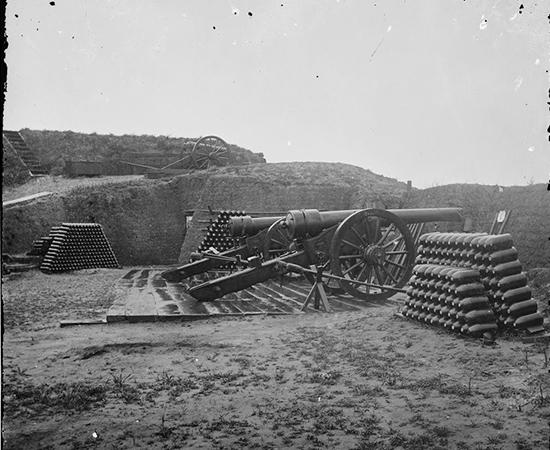
By June 9, most of the heavy siege gun positions were complete. As soon as the Union guns were in place, they began firing one round every 15 minutes. The steadily pounding noise from the timed circle of fire was hard on the defenders’ nerves, and it was meant to be. Along the Northern lines, McLaflin’s, Blankenship’s and Harrower’s 30-pounder Parrotts fired with good effect, their shots destroying the Confederate grain mill’s machinery. Exploding shells also set fire to storage buildings and dismounted several Rebel guns. At night, Confederate ordnance men worked feverishly under cover of darkness to repair the damaged gun carriages. The 1st Alabama’s men, ducking the Parrott’s fire in their rifle pits, named one of the 30-pounders ‘Whistling Dick’ because of the swooshing noise its huge shells made in flight.
More than two miles south of Harrower’s gun, one of Captain Rose’s 8-inch howitzers also earned a name for itself through its accurate enfilading fire. Its ricocheting shells would skip, bounce and roll through the Rebel rifle pits like bowling balls. The recipients of its 68-pound discharges called it ‘Bounding Bet.’ The Confederates sawed open one of its unexploded shells; inside, they found 480 copper balls of half-inch diameter.
On June 10, another of Rose’s 8-inchers dismounted a gun near the center of the Confederate lines, the blast killing the gun’s commander. Shortly before this, artillery fire had killed Captain F.J. Weller near one of his 24-pounder smoothbores at the railroad. Also on June 10, one of the Hoosiers’ Parrott rifle rounds struck yet another Confederate artillery officer. Captain R.M. Boone, commander of Boone’s Battery, had a leg blown off while he was standing atop his parapet to get a better view of the Federal guns. A washerwoman next to Boone also had her leg blown off, and a sergeant lost his foot to the same round. As the mortally wounded captain lay dying, he asked his men to load his severed limb into one of his guns and fire it at the Yankees. It is not known whether his men obeyed that last order.
Confederate officers asked for the heavy riverfront guns to be remounted so they could return enemy fire at the land defenses. Accordingly, an 8-inch shell gun and a 10-inch Columbiad in the river batteries were remounted so they could turn to fire inland over their own men, Because of its range and size of shell (128 pounds), the 10-inch Columbiad became the bane of the Federal camps. The Union soldiers soon named it ‘Old Demoralizer,’ while the Confederates lovingly called it ‘Lady Davis.’ It became a prime target of all the heavy Northern guns. They were not sure of its location, however, and the Old Demoralizer remained in service without disability for the duration of the siege, hurling its shells with impunity into Yankee camps some two miles distant.
June 12 brought about some unusual activity for the Indiana heavy artillerists. General Banks asked Battery H’s commander, Captain James Connelly, if his guns could take out a 4.62-inch Brooke rifle in the citadel, the gun that had damaged the ironclad gunboat Essex. The Essex’s captain respected the Brooke’s punch and would not come upriver to get the range of the Old Demoralizer.
Accepting Banks’ challenge, the boys of Battery H rolled their 30-pounder Parrott out of its emplacement. They moved some 250 yards across an open field and set up shop about 450 yards from the Rebel citadel. While they moved into the exposed position, a second gun crew grabbed their Merrill rifles and moved into rifle pits parallel to the gun’s path, taking up positions as sharpshooters. Their accurate fire kept the Rebel riflemen and gunners down. While the Brooke’s crewmen were busy dodging bullets, the 30-pounder’s crew started firing. After a few shots, they got the range and hit the Brooke’s muzzle. Then another round hit its axle, the next round smacked a wheel, and a final round broke the axle, Putting the gun on the ground. The 30-pounder crew then rolled their piece back into its emplacement without mishap.
The next day, at 11:15 a.m., a general bombardment of Port Hudson was begun. When only a few rounds had been fired, Battery H’s No. 2 gun blew out its vent. A few rounds later, a shell prematurely exploded and blew the muzzle off the No. 1 Parrott, putting the two-gun battery out of commission. The crews limbered their damaged pieces and went to the rear to get replacement guns.
The rest of the batteries fired so fast that one shell per second fell into the enemy works. After an hour, the bombardment ceased. It had not done much damage to the enemy or his works. Banks sent in a demand for the surrender of Port Hudson, but General Gardner calmly rejected it.
Early on the morning of the 14th, around 3 a.m., the light batteries opened up again. Within 15 minutes the heavy batteries joined in for another hour of screeching shot, shell and shrapnel. Blazing flashes from the guns and exploding shells brightened the dawn; the smell of brimstone filled the air. At first light, the infantry moved forward. As the troops advanced, Captain McLaflin’s two 30-pounder Parrotts enfiladed the Priest Cap with their fire. Bainbridge’s 10 guns joined in, forcing the Confederate troops to keep low. Large traverses across their rifle pits protected the Rebels from enfilading shot and shell fragments. As the Yankee infantry neared, the artillery ceased firing lest they hit their own men. When the Yanks neared the parapet, the riflemen in gray opened fire. The Rebel artillerists also ran out two light cannons and fired shrapnel and canister at the oncoming blue ranks.
Responding to the threat, Lieutenant Harrower took the enemy guns in the rear without endangering the attackers. Whistling Dick’s shot and shell quickly dismounted both of the Rebel guns. The Federals gained the parapet; two companies from the 4th Wisconsin and a few men from the 8th New Hampshire regiments got inside the works. Their support units from the 4th, 31st, 38th and 53rd Massachusetts fell back from the works. The 4th Massachusetts broke and ran, trampling the 31st Massachusetts in its flight. The 4th Wisconsin’s men and the 8th New Hampshire’s men inside the enemy works now surrounded by hostile Alabamians, Arkansans and Mississippians–threw up their arms in surrender.
The day’s fighting was not over. As had happened on May 27, the Federals could not get a simultaneous assault together. An hour after the assault had begun from the east, another charge rolled toward the Priest Cap from the north. The planning and execution of that charge was poor and it, too, failed.
After the failure of the June 14 assaults, the artillery again settled into the daily routine of slow-timed fire. The firing was slower than it had been during the previous days because ammunition was low. The main supply depot at Springfield Landing had not received any deliveries since June 10. What the crews had on hand was all that existed for another day. The men of Battery H, sent to the rear with their disabled guns, received assignments to travel to the Springfield Landing ammunition depot, about three miles down the river from Port Hudson. The supply boats arrived the next day, and the Indianans spent the next eight days filling shells with powder and installing fuse plugs.
Captain Connelly returned from New Orleans on the 23rd with two new 30-pounder Parrott rifles. The battery gathered their equipment and personal belongings and prepared to return to their old emplacement. But that was not to be. They had a new assignment to the left of their old position in a newly constructed battery. Named in honor of its designer and mastermind, ‘Battery Bailey’ could hold 17 guns. Most of the troops called it the ‘Great Cotton Bale Battery,’ since confiscated cotton made up most of its wall material. It was constructed only 250 yards across a deep ravine from the Rebel citadel. Two smaller emplacements flanked it on its right, and one emplacement flanked it on its left. The previous attacks against the ravine-guarded northern defenses and across the open fields of the center defenses had met with dismal results. Now the new Federal plan was to use massed artillery to pound the southernmost defensive position to rubble. Then the Union troops hoped to walk into Port Hudson over its smoking ruins.
Men, ammunition and artillery fitted the Cotton Bale Battery by June 26, and that afternoon the battery unleashed its iron fury on the Rebel citadel and the rifle pits near it. The firing was heavy and sustained for hours. Both sides blasted away with everything they could bring to bear on each other. Lt. Cot. Paul F. DeGourney, commander of the Confederate heavy artillery on the lower river batteries, could not return fire with his 24-pounder rifled siege gun because its position across from the Cotton Bate Battery was too exposed. He did get to put his rifled 24-pounder barbette gun, 8-inch shell gun, rifled 24-pounder barbette gun, 8-inch Columbiad and the Old Demoralizer into action. Still, the 8-inch shell gun and the rifled 32-pounder could only get off a total of 20 shells during the intense barrage from the Yankees.
The thunderous hurricane of Federal fire blasted down the Confederate flag at the citadel three times. Lieutenant L.A. Schirmer of DeGourney’s 12th Louisiana Battalion of Artillery repeatedly risked his life, gallantly replacing the flag each time it fell. In Battery Bailey, Battery B’s flag received 19 holes, and a Rebel rifle ball hit Major Roy’s right arm. Roy’s injury was slight, since the force of the ball spent itself in passing through the body of a Marine before it hit Roy.
The Rebels’ advanced rifle pits, aptly named ‘The Devil’s Elbow,’ bore the brunt of the Federal artillery fire. The most forward of the pits soon became untenable, and the battered Confederates withdrew to another previously prepared line of rifle pits to the rear. The citadel still stood. After the bombardment, the Southerners joked that their defensive walls were now impregnable, since they were mostly iron.
The siege wore on without significant accomplishment by either side. The big guns along the river still kept the Navy from passing, and the Army still blasted away at Port Hudson from the land side. Since the Army could not get the range of the river batteries, and the Navy could not get close enough to try for them, a battery of heavy guns had to be moved across the river. This was done in spite of Admiral David Farragut’s statement that the river batteries did not harm the Army (the infantry on the receiving end of the 10-inch and 8-inch guns begged to differ with the admiral). Farragut more accurately stated that a battery on the riverbank might overshoot the Rebels and hit its own men in the rear.
Banks decided to take a chance that shot flying too high from his own guns was less a hazard to his men than the Columbiad’s shells. He picked his best heavy battery for the task. On June 30, the 1st Indiana’s Battery H moved out of Battery Bailey. They took their equipment and guns to Springfield Landing, where they boarded waiting transports. The steamers took them about two miles upstream and landed them on the west bank. They grabbed their spikes and proceeded on foot under cover of the levee to their new position.
About midmorning on July 1, Battery H opened fire from its new position, cut into the tear bank of the levee across from the citadel. Connelly’s gunners soon found the range of the guns across the river and went to work. One shell found its way into the rifle pits by the citadel . The explosion killed three and wounded five. The 10 guns in the river batteries returned Connelly’s fire with 10-inch, 8-inch, 7-inch, 6.4-inch and 5.82-inch bolts and balls. In spite of the abundance of iron thrown against it, the levee absorbed all fire. By noon the fire had decreased. Thereafter, the Hoosiers lobbed a shell every 15 minutes until nightfall.
The next day, the Federal guns across the river from Battery H kept banging away at the citadel. Battery H opened fire on the rifled 32-pounder gun. After 40 minutes of firing, one of their bolts smashed one of the 32-pounder’s carriage cheeks. When the gun crashed down, the Hoosiers climbed atop the levee and cheered their handiwork. Four 8-inch and 10-inch shots in quick succession plowed up the levee and covered the cheering boys with earth. Their celebration quickly ended; diving behind the levee, they took shelter and tried to begin a slow fire.
Their opponents built up a furious fire in response to the Hoosiers’ insolent cheer. A Confederate shot shattered the carriage of one of the 30-pounders, and the battery’s firing slowed. Connelly’s remaining gun lobbed a few shells into the cooking fires on the riverbank across the way, causing sparks, pots, pans and curses to fly through the air. This was new fun for the Hoosiers. The bluff had hidden the flames from their view before, but from their new vantage point they were easy targets. The gunners soon tired of their sport, however, ceasing fire and withdrawing their damaged piece for repairs.
Battery H spent July 3 resting and finishing repairs to the carriage of the damaged gun. The crews had pulled the remaining functional gun out of service until they could have both guns working against the river batteries. By nightfall both pieces were back in position. The next morning they noticed that the rifled 32-pounder across the river was back in place, and ‘it looked as saucy as ever.’ The Confederates had made some repairs, too.
The Fourth of July arrived, and the Federal batteries fired a national salute of 34 blanks in celebration. The Confederates waited for an attack that did not come. In the afternoon all Federal batteries resumed a slow-timed fire. Little enemy fire was returned. That evening, Battery H fired a few shells at the cooking fires and at the horses and mules that were brought down to the riverbank to drink. Then they retired for the night.
The siege would soon end. July 7 brought word of the surrender of Vicksburg, and two Union batteries fired another salute of 34 shots. Not to be outdone, Battery H fired a salute of shell at the river batteries.
Port Hudson surrendered on July 9, 1863. At 7 a.m., General Gardner’s ragged army formed in line along the river by his headquarters. As the Federals marched across the shell-blasted soil to the river, they could hear the booming of the guns in Battery Bailey firing a 100-shot salute. Arriving at the river, the Union troop wheeled right and lined up facing their former foes.
Gardner offered his sword in surrender to Brig. Gen. George Andrews. Andrews returned it to Gardner in honor of his brave defense of his post. The Confederate infantrymen then put down their arms. There were no cheers as it Stars and Bars were lowered, only proud, defiant silence on one side and respectful silence on the other. That changed when the Stars and Stripes fluttered from atop the flagpole. The ragged, gray-clad men were still quiet, but the huzzahs from the blue-clad ranks more than made up for their silence. Captain Jacob Rawles’ 5th U.S. Battery fired a salute of 34 shots as the American flag went up the pole. At noon, with flags waving, the eight companies of the Indiana Heavy Artillery paraded in Port Hudson, which their tireless shelling had done so much to reduce.
